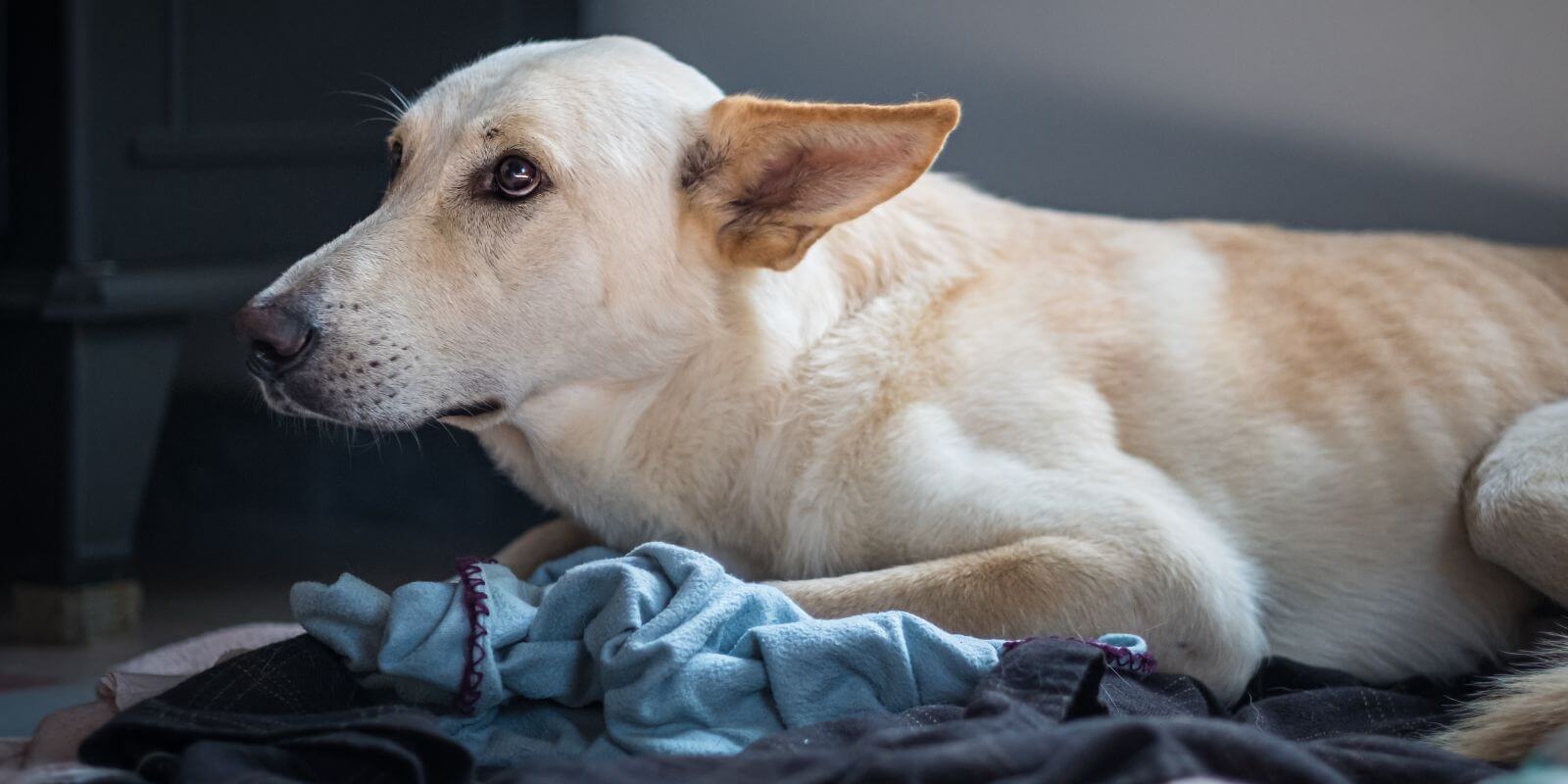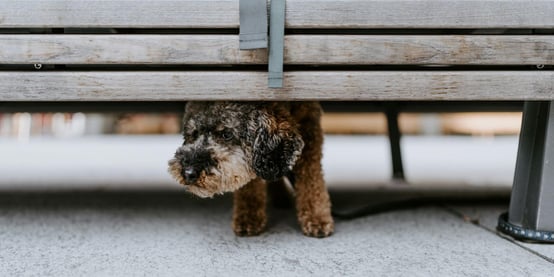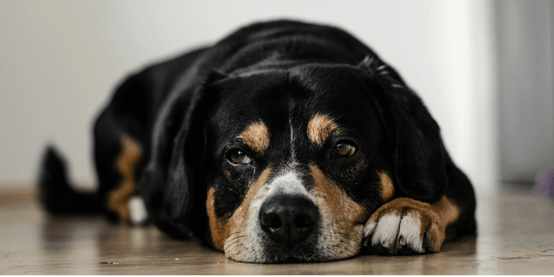Thunderstorm anxiety is a common behavioural issue that is seen in dogs. There are no specific statistics on its prevalence, but some experts estimate that up to 20% of dogs may be affected. Dogs can react to many parts of a thunderstorm: darkening skies, blowing wind, sounds of rain, claps of thunder, flashes of lightning, changes in ozone, static electricity, and barometric pressure. Regardless of what they are reacting to, if your dog has a thunderstorm phobia, it can be incredibly stressful for you and your dog.
When we all experience a startling event, a typical response is to recover quickly. But, some dogs have a genetic predisposition to anxiety and fear (for example, this is a known issue in some hunting and herding breeds). This means their genetic makeup makes their ability to recover from these events lower than “normal” dogs. Dogs can also develop thunderstorm phobias due to a lack of habituation or a traumatic event.
Dogs also become sensitized to storms. During the first storms a dog may encounter, they may exhibit only a slight reaction that is not very obvious. But, when the next storm season comes around, the fear recurs, and the reaction is greater and more obvious. So, the fear develops through repeated exposure to thunderstorms. This is why we primarily see middle-aged pets with this problem.
Signs of Thunderstorm Anxiety
- Panting
- Pacing
- Urinary & Fecal Incontinence
- Whining
- Clinging to Family Members
- Trembling
- Attempts to Hide or Escape
- Drooling
- Destructiveness (digging, chewing)
Treatment
At the first signs of thunderstorm anxiety, you should immediately set up an appointment with your veterinarian to discuss the problem and create a treatment plan. Thunderstorm phobias are treatable, but not curable. There are numerous medications that can help reduce your pet’s anxiety during a thunderstorm. Since fear of storms is not an abnormal physiological response, it is usually very challenging to manage these dogs without anti-anxiety medications.
Creating a Safe Place
Having a “safe place” for your dog is essential in the management of thunderstorm anxiety. This will provide your dog with a consistent space in the home where they can feel protected. The safe place should ideally be in an interior room of the home with no windows. This should be a place your pet is already accustomed to and comfortable in. In some instances, this may be your pet’s crate or a bathroom. You will need to take the time when there is not a thunderstorm to make sure your pet is comfortable in this area. For further advice on getting your dog acclimated to their safe place, check out this website.
Tips to Help Your Dog During a Storm
- Send your dog to their “safe place”. You should stay with them in the space if they have not been fully trained to be comfortable there.
- Tune out the storm with other noises — radio, TV, fan, or sound machine
- Close the blinds to any nearby windows
- Use pheromones to reduce anxiety
- Thundershirts may be beneficial to some dogs
- Distraction! If your pet will still play during a storm, get excited and get them to play with their favourite toy. If your pet will eat, give them a really enticing interactive food toy. You could also get them to perform their favourite tricks.
Should I Ignore or Comfort My Dog?
Remember, fear responses are not voluntary — this means that your dog can’t decide to be fearful of storms. The part of the brain that creates fear is the amygdala, and it is not under voluntary control. This means that fear of thunderstorms cannot be punished, nor can it be rewarded.
The goal of managing thunderstorm anxiety is to change your dog's emotional state from fearful to neutral. Punishment will increase the stress level of an already stressed dog, will make them more fearful, and will decrease your pet’s trust in you.
You should also not ignore your dog during storms. Historically, it was thought that giving attention to your dog during storms would reward the behaviour. But, as mentioned previously, we now know that this is false. By ignoring a fearful dog, you are depriving them of comfort and support. We also are not giving them any direction about what they should be doing instead (playing, eating, being calm in their safe place).
Thunderstorms phobias are an incredibly difficult challenge. If you need more information, the Fear Fear Happy Homes site also has a lot of great information. I would also encourage you to speak with your veterinarian to develop a treatment plan that works for you and your pet.



